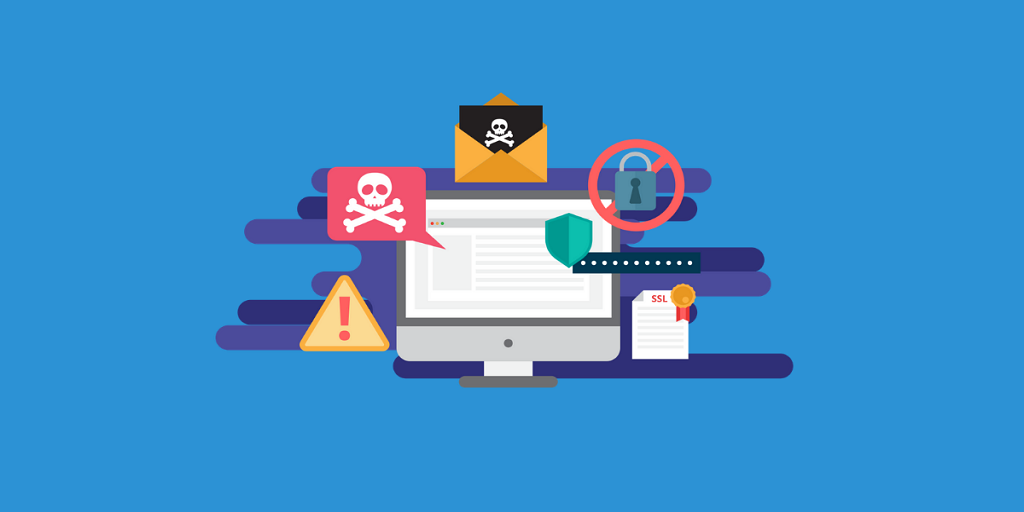Data security has become an increasingly critical concern for businesses worldwide. With the rise of cyber threats, businesses face potential reputational damage, financial losses, and legal consequences if they fail to protect their sensitive data. In 2023 alone, global reports indicated a 15% increase in data breaches compared to the previous year, affecting companies of all sizes. High-profile data breaches, such as those involving Facebook, Equifax, and Target, have raised awareness of how vulnerable businesses are to cyber-attacks.
This guide provides a comprehensive overview of data security for businesses, covering everything from understanding threats to implementing effective security practices. Whether you run a small business or a multinational corporation, securing your data is no longer optional—it’s essential for survival.
Introduction to Data Security
Data security refers to the practices, policies, and technologies designed to protect digital information from unauthorized access, theft, or damage. It involves safeguarding everything from business records to sensitive customer data, intellectual property, and proprietary information. With the digital transformation of businesses, more data is now stored electronically, making it an attractive target for cybercriminals.
Effective data security measures are not just the responsibility of IT departments—they should be integrated into every aspect of business operations, from software development to customer service.
Why Data Security Matters to Businesses
For businesses, data security is crucial for several reasons:
- Protecting sensitive information: Companies collect and store a vast amount of sensitive data, including personal information, financial records, and trade secrets.
- Building customer trust: Customers expect businesses to keep their information secure. A single data breach can erode trust and lead to a loss of customers.
- Preventing financial losses: Cyber-attacks can result in direct financial losses through theft, business interruption, or fines for non-compliance with regulations.
- Ensuring business continuity: If data is corrupted, lost, or stolen, businesses may struggle to operate normally, leading to significant downtime and recovery costs.
- Avoiding legal consequences: Many industries are subject to strict regulations that require businesses to safeguard their data. Non-compliance can result in hefty fines and legal action.
Common Types of Cyber Threats
Understanding the various types of cyber threats is the first step in protecting your business from them. Here are some of the most common threats businesses face:
a. Phishing
Phishing attacks occur when cybercriminals trick individuals into providing sensitive information, such as passwords or financial data, by pretending to be legitimate entities. Phishing can be conducted through email, text messages, or fraudulent websites.
b. Malware
Malware is malicious software designed to damage or disrupt computer systems. Types of malware include viruses, worms, ransomware, and spyware. Once inside a system, malware can steal data, damage files, or hold data for ransom.
c. Ransomware
Ransomware encrypts a victim’s files, rendering them inaccessible until a ransom is paid to the attacker. In 2020, the infamous attack on Garmin, a GPS and fitness company, saw their services taken offline by ransomware, with reports suggesting a multimillion-dollar ransom was paid.
d. Insider Threats
Not all threats come from external sources. Employees, whether malicious or negligent, can cause data breaches by misusing their access to sensitive information. Insider threats can be difficult to detect because they involve individuals who are already trusted within the company.
e. Denial of Service (DoS) and Distributed Denial of Service (DDoS)
DoS and DDoS attacks overwhelm a company’s servers with traffic, rendering their services unavailable. These attacks can cause significant disruption to business operations, particularly for e-commerce and online service providers.
High-Profile Data Breaches and Their Impact
a. Equifax Breach (2017)

In 2017, Equifax, one of the largest credit reporting agencies in the world, suffered a data breach that exposed the personal information of approximately 147 million people. Hackers exploited a vulnerability in a web application framework, gaining access to names, Social Security numbers, birth dates, addresses, and in some cases, driver’s license numbers. Equifax faced lawsuits, reputational damage, and an eventual settlement of up to $700 million with the Federal Trade Commission (FTC).
b. Facebook (2018)

The Facebook-Cambridge Analytica scandal exposed the misuse of personal data belonging to over 87 million Facebook users. Cambridge Analytica, a political consulting firm, harvested personal information without users’ consent, influencing election campaigns in several countries. Facebook was fined $5 billion by the FTC and had to adopt stricter privacy policies.
c. Target Breach (2013)

During the 2013 holiday shopping season, Target experienced one of the largest retail data breaches in history. Hackers gained access to the credit card details of 40 million customers, along with personal data like phone numbers and addresses for another 70 million. The breach originated from stolen credentials from a third-party vendor. Target ultimately paid $18.5 million to settle the claims with multiple states.
These breaches highlight the significant financial, legal, and reputational costs that businesses can face if they do not adequately protect their data.
Key Data Security Best Practices
To safeguard against the threats outlined above, businesses must implement a variety of security measures. The following best practices serve as the foundation of an effective data security strategy:
a. Data Encryption
Encrypting sensitive data ensures that even if unauthorized individuals gain access to it, they cannot read it. Encryption should be applied to data at rest (stored data) and data in transit (data being transmitted).
b. Regular Software Updates
Keeping software and systems up to date is essential for patching security vulnerabilities. Outdated software is one of the most common entry points for cybercriminals.
c. Multi-Factor Authentication (MFA)
Multi-factor authentication adds an extra layer of security by requiring users to provide two or more forms of identification before accessing a system. This may include something they know (a password), something they have (a phone), or something they are (a fingerprint).
d. Backup and Recovery Solutions
Regularly backing up data ensures that in the event of a cyber-attack, hardware failure, or natural disaster, businesses can quickly restore lost or compromised information.
e. Access Controls
Limiting access to sensitive data to only those who need it minimizes the risk of insider threats and accidental data exposure. Businesses should implement role-based access controls (RBAC) to ensure employees can only access the information necessary for their roles.
f. Security Audits
Conducting regular security audits helps businesses identify weaknesses in their security infrastructure and fix them before they can be exploited. Audits should include penetration testing, where ethical hackers attempt to breach the company’s defenses.
Implementing a Data Security Strategy
Creating a robust data security strategy involves several key steps. Here’s a roadmap for businesses looking to secure their data:
a. Risk Assessment
Begin by conducting a comprehensive risk assessment to identify the types of data your business handles, where it is stored, and potential vulnerabilities in your systems. This will help prioritize security efforts based on the value of the data and the risk of exposure.
b. Develop a Security Policy
Create a formal data security policy that outlines the responsibilities of employees, contractors, and third parties. This policy should cover password management, data access protocols, and procedures for handling and storing sensitive information.
c. Data Classification
Classify data according to its sensitivity and importance to your business. Not all data needs the same level of protection. By classifying data, you can focus your security efforts on the most critical assets.
d. Monitoring and Detection
Implement systems that continuously monitor network traffic for suspicious activity. Intrusion detection systems (IDS) and intrusion prevention systems (IPS) can identify potential threats before they cause harm.
e. Incident Response Plan
An incident response plan outlines the steps your business will take in the event of a data breach. This should include identifying the source of the breach, containing the damage, notifying affected individuals, and reporting the breach to regulatory authorities.
Legal and Regulatory Compliance
Businesses are subject to various data protection laws and regulations, depending on the industry they operate in and the geographical regions they serve. Failure to comply with these regulations can result in hefty fines and legal penalties.
a. General Data Protection Regulation (GDPR)
The GDPR is a European Union law that regulates the collection, storage, and use of personal data. Businesses that fail to comply with GDPR requirements can be fined up to 4% of their global annual revenue or €20 million, whichever is higher.
b. California Consumer Privacy Act (CCPA)
The CCPA grants California residents certain rights over their personal data, including the right to know what information is being collected, the right to request deletion of their data, and the right to opt out of the sale of their data.
c. Health Insurance Portability and Accountability Act (HIPAA)
HIPAA applies to businesses in the healthcare industry and requires them to protect sensitive patient information. Violations of HIPAA can lead to significant fines and loss of business reputation.
The Role of Encryption in Data Security
Encryption is one of the most powerful tools for protecting sensitive data from unauthorized access. Encryption works by converting readable data (plaintext) into an unreadable format (ciphertext) that can only be decoded by someone with the correct decryption key.
There are two primary types of encryption used in business environments:
a. Symmetric Encryption
In symmetric encryption, the same key is used for both encryption and decryption. While fast and efficient, this method requires secure management of the keys.
b. Asymmetric Encryption
Asymmetric encryption uses two keys: a public key for encryption and a private key for decryption. This method is more secure but also requires more processing power, making it less suitable for real-time applications.
By encrypting sensitive data both at rest and in transit, businesses can significantly reduce the risk of data breaches and unauthorized access.
Cloud Security: Challenges and Solutions
As more businesses migrate to the cloud, they face new security challenges, including:
- Data Ownership and Control: Cloud providers often manage the infrastructure where data is stored, but businesses remain responsible for protecting the data.
- Shared Responsibility: Cloud security operates on a shared responsibility model, where the provider secures the infrastructure, but businesses must secure their data and applications.
- Compliance Concerns: Not all cloud providers comply with specific industry regulations like HIPAA or GDPR, so businesses must choose providers carefully.
To secure data in the cloud, businesses should:
- Use encryption for all data stored in the cloud.
- Implement strong access controls and authentication measures.
- Regularly review cloud security policies and monitor for suspicious activity.
Employee Training and Awareness Programs
A significant percentage of data breaches are caused by human error, making employee training an essential component of any data security strategy. Training programs should cover:
- Recognizing phishing attempts and social engineering attacks.
- Proper password management practices.
- Data handling procedures to minimize the risk of accidental exposure.
- Incident reporting protocols in case of a potential security breach.
Regular training sessions ensure that employees remain aware of the latest threats and how to mitigate them.
Incident Response Planning
No matter how robust a business’s data security measures are, the possibility of a breach still exists. A well-prepared incident response plan can significantly reduce the damage caused by a breach. An effective plan should include:
- Identification: Detect the breach early and assess its scope.
- Containment: Implement immediate steps to prevent further data loss or damage.
- Eradication: Remove the root cause of the breach, such as malicious software or a compromised account.
- Recovery: Restore affected systems and data to normal operation.
- Communication: Notify stakeholders, affected customers, and regulatory bodies as required.
Testing the incident response plan regularly is essential to ensure that it works effectively in real-world scenarios.
Future Trends in Data Security

The cybersecurity landscape is constantly evolving, and businesses must adapt to emerging trends to stay protected. Some future trends in data security include:
a. AI and Machine Learning in Cybersecurity
AI and machine learning algorithms are being used to detect anomalies in network traffic and identify potential threats more quickly. These technologies can help automate threat detection and response.
b. Zero Trust Security
The Zero Trust model operates on the assumption that threats can exist both inside and outside the network. It requires strict identity verification for anyone attempting to access resources, even within the network perimeter.
c. Quantum Computing and Encryption
As quantum computing technology advances, it poses a potential threat to traditional encryption methods. Researchers are working on developing quantum-resistant encryption algorithms to protect against future attacks.
Conclusion: Building a Secure Future
Data security is no longer just a concern for IT departments; it must be an integral part of every business’s operations. By implementing the best practices outlined in this guide, businesses can protect themselves from cyber threats, maintain customer trust, and comply with legal regulations.
As technology evolves, so do the methods cybercriminals use to exploit vulnerabilities. The key to long-term success in data security is staying proactive, regularly updating security measures, and fostering a culture of security awareness among employees. By investing in robust data security practices today, businesses can safeguard their future in the digital age.
Read Also
- Avast vs. Windows Defender
- CyberGhost VPN Free Trial
- NordVPN Free Trial: How To Get NordVPN 7 Days Free Tria
